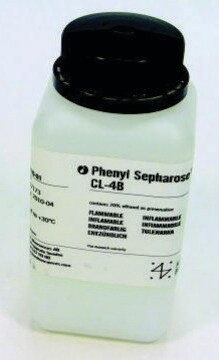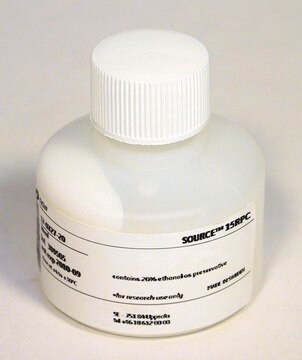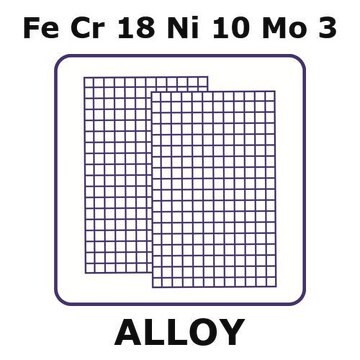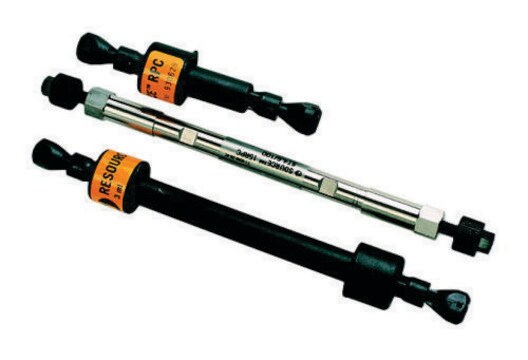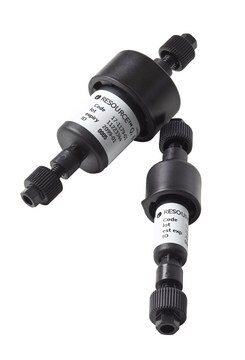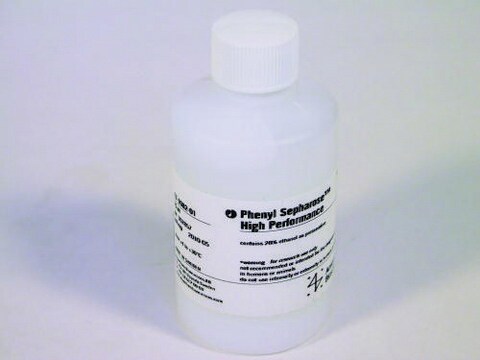Recommended Products
ligand
matrix surface
material
polypropylene column
feature
autoclavable 20 min at 121°C
packaging
pkg of 1 column
parameter
flow rate
0.5 ml/min - 2.5 ml/min flow rate
580 psi
technique(s)
HPLC: suitable
bed size
4.6 mm × 100 mm
bed volume
1.7 mL
column I.D.
4.6 mm
matrix
polymeric
polystyrene/divinylbenzene
matrix active group
polystyrene-divinylbenzene phase
avg. part. size
15 μm
cleaning
1-14
working range
1-12
capacity
~10 mg binding capacity
suitability
suitable for bioprocess medium
separation technique
reversed phase
General description
Application
Features and Benefits
- Wide pH range (1-12), outstanding selectivity, chemical resistance, high capacity, and high resolution at high fLow rates.
- Excellent scalability, from RESOURCE™ to FineLINE columns.
- using ÄKTA® design and other high-performance liquid chromatography systems.
Storage and Stability
Analysis Note
Other Notes
Legal Information
Signal Word
Warning
Hazard Statements
Precautionary Statements
Storage Class Code
3 - Flammable liquids
Choose from one of the most recent versions:
Certificates of Analysis (COA)
Sorry, we don't have COAs for this product available online at this time.
If you need assistance, please contact Customer Support.
Already Own This Product?
Find documentation for the products that you have recently purchased in the Document Library.
Articles
Poor-quality eluent components can cause a phenomenon referred to as “ghosting”. Trace levels of organic impurities bind to the medium, concentrating during equilibration and sample application. When elution begins, these contaminants appear in the chromatogram as unknown, or “ghost” peaks.
The different stages of working with SOURCE™ (Cytiva) for high-resolution separation are discussed, from purification to polishing and scaling up
This page discusses column packing and preparation techniques for reverse phase chromatography.
Protocols
In this section the practical aspect of Reverse Phased Chromatography ( RPC) is discussed including media and column selection and eluent selection and preparation.
Our team of scientists has experience in all areas of research including Life Science, Material Science, Chemical Synthesis, Chromatography, Analytical and many others.
Contact Technical Service